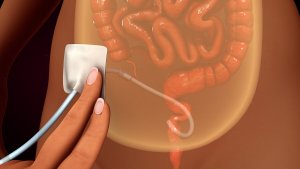Diet Recommendations for Peritoneal Dialysis

Chronic kidney diseases affect kidney function and structure. At what stage of this disease are patients undergoing peritoneal dialysis programs?
There are three groups for these diseases. First, pre-dialysis, a phase that includes people whose kidney function has begun to decline. Second, people who have lost practically all kidney function and are dialyzed by hemodialysis or peritoneal dialysis. Finally, there are transplant patients.
For each phase, there are specific nutritional needs. In this article, we’ll tell you some diet recommendations.
Chronic kidney disease
To diagnose kidney disease, we use the criteria of the KDIGO 2012 guidelines– Kidney Disease Improving Global Outcomes. These state the presence of kidney disease if these happen for at least three months:
- A decrease in glomerular filtration below 60 ml / min / 1.73 m2.
- Renal injury revealed directly from a biopsy or indirectly by analytical changes.
Based on glomerular filtration, there are five stages of kidney diseases. In the last phase, there needs to be a substitute. The last stage of kidney disease is kidney failure, and it happens when the kidneys can’t do their job anymore. Faced with this, there are two options: dialysis or a kidney transplant.
Peritoneal dialysis process description
People need dialysis when the kidneys can’t filter blood. There are two methods: hemodialysis, which is more common, and peritoneal dialysis. What does the second one consist of?

Peritoneal dialysis is much more comfortable than hemodialysis since you can do it at home and the patient can travel. However, this doesn’t work for all patients, since it requires more skill for the patient’s caretaker.
By inserting a catheter into the abdomen, fluid can move through the peritoneum. This tissue that lines the abdomen filters the blood to remove waste.
Problems associated with peritoneal dialysis: malnutrition
Malnutrition is one of the most pressing problems arising from kidney disease. In fact, a published study found that 63 percent of subjects in peritoneal dialysis problems were malnourished.
The criteria for diagnosing malnutrition are:
- Decrease of some parameters such as albumin, prealbumin, or cholesterol.
- A reduction in body mass index. Specifically, a loss of more than 5 percent of the weight in less than three months, 10 percent in six months, or a percentage of fat mass less than 10 percent.
- Muscle depletion, either noticeable or by a reduction in serum creatinine.
- Not eating much unintentionally.
Causes
Poor dialysis adjustment can lead to loss of appetite and malnutrition. Also, people lose protein through peritoneal dialysis more than hemodialysis. Additionally, it increases during peritonitis.
On the other hand, lots of patients on peritoneal dialysis have protein losses in urine and suffer from anorexia.
Solution: nutritional changes
Preventing malnutrition is important to stay safe. So, there are some specific nutritional guidelines to consider.
Proteins in peritoneal dialysis
You need to get more protein during this than during hemodialysis. In fact, patients will need about 1.2 or 1.3 grams of protein per pound per day. Then, you can change this depending on how much potassium, phosphorus and urea you have.

Specific recommendations: weight control
In peritoneal dialysis, weight control is common. However, it’s very important for these patients to maintain their weight. They may experience weight gain for two main reasons.
On one hand, the liquid in dialysis contains glucose, and you absorb 80 percent of it. Therefore, these patients have lower nutritional needs. In fact, they need about 400-800 kcal per day less than other people.
Also, it’s important that these patients get extra carbohydrates in the form of complex carbohydrates. That way, they counteract the simple carbohydrates from dialysis.
On the other hand, another problem of peritoneal dialysis is getting full quickly. In these cases, eating multiple small meals can help.
Drinking water
Compared to hemodialysis, these patients don’t need to restrict their fluid intake as long as they control their blood pressure, weight, and urine. However, their water needs may vary depending on their urine.
Electrolytes
Restricting potassium, calcium, and phosphorus depends on the serum values in tests.
Chronic kidney diseases affect kidney function and structure. At what stage of this disease are patients undergoing peritoneal dialysis programs?
There are three groups for these diseases. First, pre-dialysis, a phase that includes people whose kidney function has begun to decline. Second, people who have lost practically all kidney function and are dialyzed by hemodialysis or peritoneal dialysis. Finally, there are transplant patients.
For each phase, there are specific nutritional needs. In this article, we’ll tell you some diet recommendations.
Chronic kidney disease
To diagnose kidney disease, we use the criteria of the KDIGO 2012 guidelines– Kidney Disease Improving Global Outcomes. These state the presence of kidney disease if these happen for at least three months:
- A decrease in glomerular filtration below 60 ml / min / 1.73 m2.
- Renal injury revealed directly from a biopsy or indirectly by analytical changes.
Based on glomerular filtration, there are five stages of kidney diseases. In the last phase, there needs to be a substitute. The last stage of kidney disease is kidney failure, and it happens when the kidneys can’t do their job anymore. Faced with this, there are two options: dialysis or a kidney transplant.
Peritoneal dialysis process description
People need dialysis when the kidneys can’t filter blood. There are two methods: hemodialysis, which is more common, and peritoneal dialysis. What does the second one consist of?

Peritoneal dialysis is much more comfortable than hemodialysis since you can do it at home and the patient can travel. However, this doesn’t work for all patients, since it requires more skill for the patient’s caretaker.
By inserting a catheter into the abdomen, fluid can move through the peritoneum. This tissue that lines the abdomen filters the blood to remove waste.
Problems associated with peritoneal dialysis: malnutrition
Malnutrition is one of the most pressing problems arising from kidney disease. In fact, a published study found that 63 percent of subjects in peritoneal dialysis problems were malnourished.
The criteria for diagnosing malnutrition are:
- Decrease of some parameters such as albumin, prealbumin, or cholesterol.
- A reduction in body mass index. Specifically, a loss of more than 5 percent of the weight in less than three months, 10 percent in six months, or a percentage of fat mass less than 10 percent.
- Muscle depletion, either noticeable or by a reduction in serum creatinine.
- Not eating much unintentionally.
Causes
Poor dialysis adjustment can lead to loss of appetite and malnutrition. Also, people lose protein through peritoneal dialysis more than hemodialysis. Additionally, it increases during peritonitis.
On the other hand, lots of patients on peritoneal dialysis have protein losses in urine and suffer from anorexia.
Solution: nutritional changes
Preventing malnutrition is important to stay safe. So, there are some specific nutritional guidelines to consider.
Proteins in peritoneal dialysis
You need to get more protein during this than during hemodialysis. In fact, patients will need about 1.2 or 1.3 grams of protein per pound per day. Then, you can change this depending on how much potassium, phosphorus and urea you have.

Specific recommendations: weight control
In peritoneal dialysis, weight control is common. However, it’s very important for these patients to maintain their weight. They may experience weight gain for two main reasons.
On one hand, the liquid in dialysis contains glucose, and you absorb 80 percent of it. Therefore, these patients have lower nutritional needs. In fact, they need about 400-800 kcal per day less than other people.
Also, it’s important that these patients get extra carbohydrates in the form of complex carbohydrates. That way, they counteract the simple carbohydrates from dialysis.
On the other hand, another problem of peritoneal dialysis is getting full quickly. In these cases, eating multiple small meals can help.
Drinking water
Compared to hemodialysis, these patients don’t need to restrict their fluid intake as long as they control their blood pressure, weight, and urine. However, their water needs may vary depending on their urine.
Electrolytes
Restricting potassium, calcium, and phosphorus depends on the serum values in tests.
All cited sources were thoroughly reviewed by our team to ensure their quality, reliability, currency, and validity. The bibliography of this article was considered reliable and of academic or scientific accuracy.
- Mehrotra R, Duong U, Jiwakanon S, et al. Serum albumin as a predictor of mortality in peritoneal dialysis: comparisons with hemodialysis. Am J Kidney Dis 2011; 58:418.
- Fouque D, Kalantar-Zadeh K, Kopple J, et al. A proposed nomenclature and diagnostic criteria for protein-energy wasting in acute and chronic kidney disease. Kidney Int 2008; 73:391.
This text is provided for informational purposes only and does not replace consultation with a professional. If in doubt, consult your specialist.








